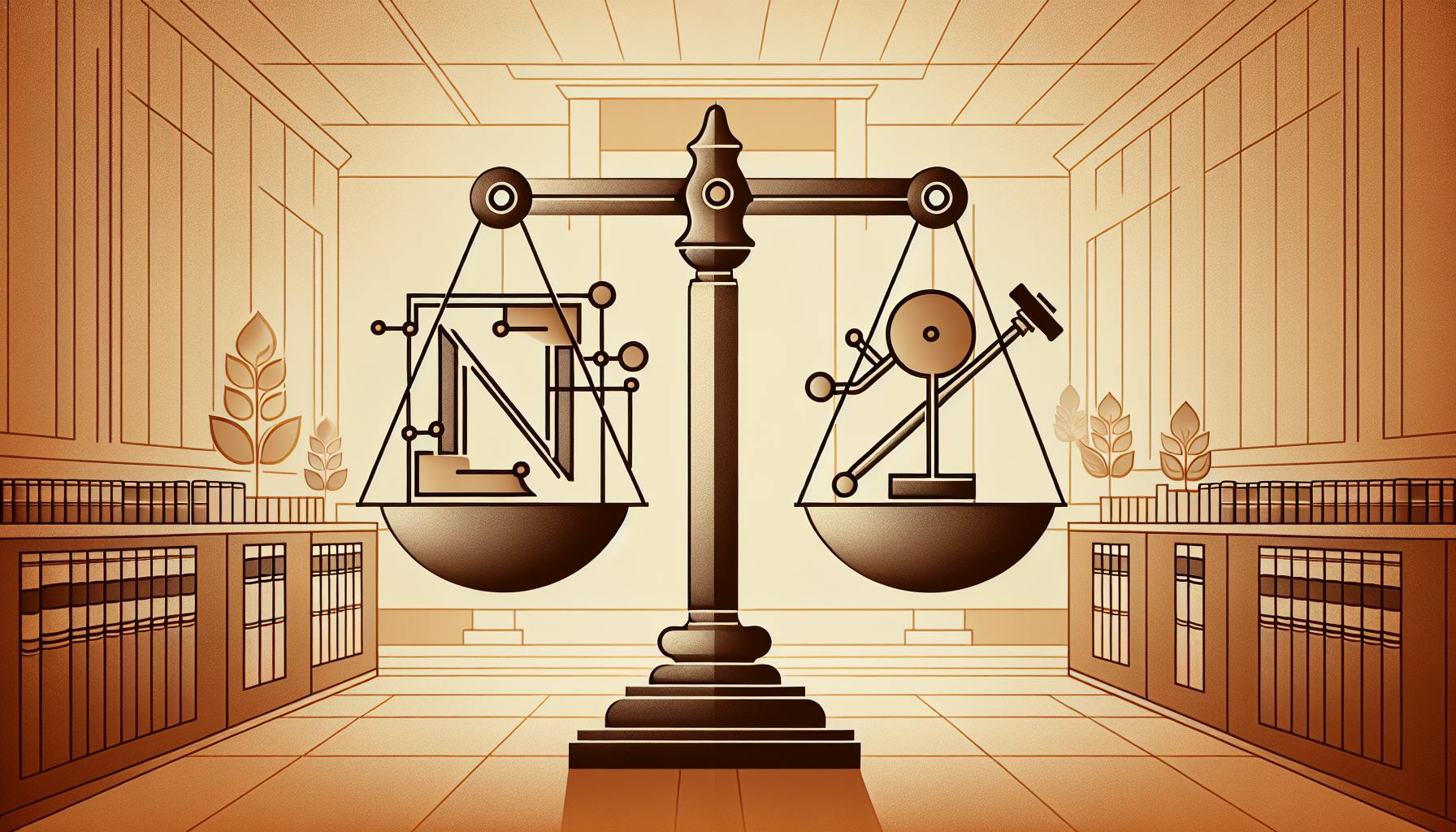Most can agree that legal terminology often feels confusing or intimidating.
This article aims to clearly define misrepresentation, explain its essential legal elements, and provide illustrative examples to demystify this complex concept.
You'll gain an accessible understanding of misrepresentation's role in contract law, the remedies available, and how to safeguard agreements through preventative measures.
Introduction to Misrepresentation in Contract Law
Misrepresentation refers to false or misleading statements made by one party to induce another party into entering a contract. It can have significant legal implications if established in court. This article will provide an overview of misrepresentation in contract law, including:
Defining Misrepresentation in Legal Terms
Misrepresentation is a legal concept referring to a false statement of fact made by one party to a contract (the representor) to the other (the representee) which induces the representee to enter the contract. To prove misrepresentation, the representee must show:
- The representor made a false statement of fact
- The representor knew the statement was false or was reckless about its truth
- The false statement was intended to induce the representee to enter the contract
- The representee relied on the false statement in entering the contract
Misrepresentation differs from fraud in that it does not require proof of intent to deceive. It also differs from other business torts like negligence which involve a duty of care.
Understanding the Types of Misrepresentation in Contract Law
There are three main types of misrepresentation:
Fraudulent misrepresentation occurs when the representor knowingly makes a false statement to induce the other party into a contract. This is dealt with harshly under the law.
Negligent misrepresentation happens when false information is given carelessly, without reasonable grounds for believing it to be true.
Innocent misrepresentation refers to an honest mistake where the representor reasonably believed the statement to be true.
The type of misrepresentation affects the remedies available to the representee if misrepresentation is proven in court.
Legal Standards for Proving Misrepresentation
To successfully claim misrepresentation, the representee must show:
- There was a false statement of material fact
- The representor was careless about the truth or knew it was false
- The representee relied on the false statement in entering the contract
- The reliance caused harm to the representee
The required standard of proof depends on the type of misrepresentation alleged. Negligent or innocent misrepresentation claims usually require a "balance of probabilities" standard. Fraudulent misrepresentation must be proven on a higher "clear and convincing evidence" standard given the seriousness of the allegation.
The Role of Misrepresentation in Commercial Transactions
In commercial contract law, misrepresentations can render agreements void or voidable. It allows the deceived party to rescind the contract and claim damages. As such, misrepresentation is an important legal protection for businesses against false statements made during negotiations or in contract documents. It deters deception and builds trust in commercial relationships.
Clearly identifying misrepresentations early also allows disputes to be resolved without needing to litigate a breach of contract claim. Overall, the law aims to balance protecting parties from false statements while also upholding the security of contracts and enabling commerce.
What are the three 3 elements of misrepresentation?
The three key elements that must be present to establish misrepresentation in contract law are:
-
The defendant made a false statement of fact. This statement must be about a material fact that is verifiable, not an opinion. For example, falsely stating that a car has only been driven 20,000 miles when the odometer shows 80,000 miles.
-
The defendant knew the statement was false or was reckless. The person making the false statement must have known it was untrue or acted with reckless disregard for the truth. Simply making an innocent mistake typically does not qualify as misrepresentation.
-
The defendant intended the plaintiff to rely on the false statement. There must be evidence showing the person making the false statement intended or expected the other party to trust that the information was factual and accurate.
To prove misrepresentation, the plaintiff must show clear evidence of all three of these key elements. Minor inaccuracies or innocent errors typically do not qualify as misrepresentation in legal terms. The false statement must be material, intentionally misleading, and reasonably relied upon. Consult an attorney to determine if your situation meets the criteria for a misrepresentation claim.
What is an example of misrepresentation in law?
One common example of fraudulent misrepresentation in contract law is when a party negotiates a business deal or contract but intentionally provides false information to the other party in order to induce them into agreeing to the contract.
For instance, if Company A is negotiating the purchase of Company B, the owner of Company B might falsely claim that the company's revenues and profits are higher than they truly are. If Company A relies on this inaccurate financial information in deciding to purchase Company B, this could constitute fraudulent misrepresentation.
Some key things to note about misrepresentation in contract law:
-
The false statement of fact must have played a material role in influencing the other party to enter into the contract. If the false statement was inconsequential, then there may not be a valid legal claim of misrepresentation.
-
There must be evidence that the party making the false statement knew it was untrue or was reckless in not verifying its accuracy. Making an innocent factual error typically does not qualify as fraudulent misrepresentation.
-
There are legal remedies available to the injured party in a misrepresentation claim, such as awarding damages or allowing the party to rescind the contract.
So in summary, an example would be if Company B provides false financial statements to Company A during acquisition negotiations. This could enable Company A to sue for damages if they relied on misrepresented facts that influenced their decision to purchase Company B.
What is the legal term for misrepresentation?
Fraudulent misrepresentation is the legal term used when someone intentionally or recklessly makes a false statement in order to induce the other party into a contract. This type of misrepresentation is considered a tort claim, typically arising in contract law.
To prove fraudulent misrepresentation, the plaintiff must show:
- The defendant made a false statement of fact or opinion
- The defendant knew the statement was false or made it recklessly without regard for its truth
- The defendant intended for the plaintiff to rely on the misrepresentation
- The plaintiff did rely on the misrepresentation
- The plaintiff suffered damages as a result
The main remedies available for fraudulent misrepresentation are rescission of the contract and damages. Rescission essentially puts both parties back in the position they were in before the contract. Damages aim to compensate the plaintiff for any losses suffered because of the defendant's misrepresentation.
Other types of misrepresentation claims include:
- Innocent misrepresentation - when the person making the false statement honestly believed it was true
- Negligent misrepresentation - when false information is given without reasonable care
- Strict responsibility misrepresentation - when one party doesn't verify information they pass along
So in summary, fraudulent misrepresentation is an intentional tort arising when someone makes a false statement, knows it is false, intends someone to rely on it, and causes them harm as a result. The legal remedies typically involve cancelling the contract and awarding damages.
sbb-itb-e93bf99
What is misrepresentation and its essential?
Misrepresentation refers to a false statement of fact or law made by one party to another, which induces the other party to enter into a contract. This causes loss to the party that relied on the false statement.
The key elements of misrepresentation are:
- A false statement of fact or law
- Made by one party to another party
- Which induces the other party to enter a contract
- Causing loss to the party that relied on the statement
There are different types of misrepresentation:
- Fraudulent misrepresentation - when a party makes a false statement knowing it is untrue or being reckless about its truth
- Negligent misrepresentation - when a party makes a false statement having no reasonable grounds for believing it is true
- Innocent misrepresentation - when a party makes an untrue statement believing it is true
The effects of misrepresentation depend on the type but may include:
- The contract being voidable so the injured party can end it
- Damages awarded to compensate the injured party's losses
- Rescission to put the parties back in the position before the contract
Key remedies available for misrepresentation include damages, rescission, and an indemnity. Factors like the type of misrepresentation and losses suffered determine the appropriate remedy.
Exploring the Effects of Misrepresentation in Contract Agreements
Misrepresentation in contract agreements can have major legal and financial implications for the parties involved. This section analyzes some of the key effects, focusing on contract voidability, assessing damages, and the impact on small businesses and commercial law.
Contract Voidability and Rescission as a Remedy
Certain types of misrepresentation, such as fraudulent or innocent misrepresentation, may entitle the affected party to void the contract. This remedy of rescission puts the parties back in the position they were in before entering the contract.
For example, if a seller makes false claims about a product to induce a buyer to purchase it, the buyer may be able to void the contract and get their money back upon discovering the misrepresentation. Damages may also be awarded.
However, for a contract to be voided due to misrepresentation, certain conditions must be met around the nature of the false statement and the victim's reliance on it. Legal advice should be sought to determine eligibility.
Assessing Damages for Misrepresentation Claims
Beyond contract rescission, financial remedies are also available for misrepresentation claims under both contract law and tort law:
-
Contract law damages - Aims to put the victim in the position they would have been in had the contract been properly performed based on the terms agreed upon. This may include refunds, replacement goods if applicable, or monetary compensation for losses.
-
Tort damages - Intended to compensate the victim for any losses suffered as a result of their reasonable reliance on a fraudulent misrepresentation. This may cover actual losses, lost profits, attorney fees, court costs, and potentially punitive damages to punish intentional deceit.
The specific remedies and damage amounts can vary widely based on the case specifics. Plaintiffs should seek legal counsel to determine the optimal approach.
Impact on Small Business Law and Commercial Law
For small businesses, misrepresentation can significantly impact operations and bottom lines:
-
Contract rescission can mean wasted operating expenses, inventory costs, opportunity costs from dealing with legal issues rather than running the business, and more.
-
Tort damages can easily surpass contract amounts and may not be fully covered by insurance policies. Out-of-pocket costs could be business-crippling.
-
Commercial transactions rely heavily on truthful representations between parties. False claims undermine the good faith needed for deals to occur and markets to function smoothly.
Ultimately, small businesses should take care to only make truthful, evidence-backed claims in business dealings. Seeking legal advice can help identify any potential misrepresentation issues before they arise. Understanding the remedies and damages outlined above can also inform risk management.
Analyzing Misrepresentation Cases and Their Outcomes
Misrepresentation can have serious legal consequences. Providing a balanced perspective, this section analyzes misrepresentation cases and outcomes to foster greater understanding.
Case Study: Fraudulent Misrepresentation and Legal Consequences
While some misrepresentation cases may involve innocent mistakes, fraudulent misrepresentation implies intent to deceive. In these situations, harsh penalties may apply. However, reasonable people can disagree on appropriate remedies. With compassion on all sides, solutions upholding ethics and accountability can emerge.
Example of Innocent Misrepresentation in Contract Law
Even well-intentioned parties can unintentionally provide false information during negotiations. In such cases, contract law often allows for good faith amendments or cancellations without penalty. Focusing on addressing harms rather than assigning blame supports equitable outcomes.
The Role of Fiduciary Duty in Misrepresentation Cases
When a relationship of trust is betrayed through misrepresentation, additional remedies may come into play. However, context matters greatly. Nuanced discussions focused on preventing future harms tend to yield better solutions than punishments alone.
Financial Statement Manipulation as Misrepresentation
While accuracy in financial reporting is essential, not all discrepancies constitute intentional deception. Distinguishing errors from fraud, then addressing root causes, serves the interests of both justice and compassion. With understanding and integrity on all sides, workable solutions are possible.
In complex areas like misrepresentation law, reasonable people can disagree on what constitutes ethical behavior or fair consequences. This section aimed to provide balanced perspectives for reflection, not definitive judgments. With open and compassionate dialogue, greater wisdom can emerge over time.
Preventative Measures and Remedies for Misrepresentation
Drafting Clear Terms to Avoid Misrepresentation
It is crucial that all parties involved in a contract carefully review and understand the terms before signing. Ambiguous language can lead to misinterpretations and disputes down the line.
Here are some tips for drafting clear contract terms:
- Define key terms upfront to establish shared understanding
- Use simple, straightforward language whenever possible
- Specify quantities, prices, delivery timelines, etc. numerically
- Include examples to illustrate complex concepts
- Review drafts with all stakeholders and incorporate feedback
- Seek legal review to identify potential areas of misrepresentation
Taking the time to ensure clarity in contract terms can prevent many issues from arising.
Implementing Verification Processes to Mitigate Risks
Organizations can implement additional verification steps during negotiations and due diligence to help avoid misrepresentation:
- Fact check statements about capabilities, assets, liabilities etc. Request supporting documents.
- Independently verify claims by speaking to references provided.
- Conduct site visits and in-person meetings at the other party's premises.
- Review financial statements and tax filings to validate reports.
- Use escrow services to secure funds until post-deal verification.
While not foolproof, adding such confirmation processes where feasible can help mitigate risks.
Legal Remedies for Misrepresentation in Business Contracts
If a party to a contract makes false statements, there are legal remedies available:
- Rescission: The contract can be set aside and parties restored to pre-contract positions.
- Damages: Compensation can be sought for financial losses suffered due to reliance on misinformation.
- Innocent Misrepresentation: Damages may be reduced if false information was provided unintentionally.
- Fraudulent Misrepresentation: Punitive damages may apply if false statements were intentional.
Seeking legal counsel early when misrepresentation is uncovered can help determine the best path toward resolution.
Regulatory Compliance to Prevent Misrepresentation
There are also regulations in place to deter misrepresentation, like:
- The False Claims Act imposes civil liability for knowingly providing false information related to government funds/property.
- The Program Fraud Civil Remedies Act allows federal agencies to investigate and impose administrative penalties for false statements made during procurement.
Maintaining rigorous internal compliance programs aligned to such regulations can help prevent issues stemming from misrepresentation.
Conclusion: Summarizing Misrepresentation and Its Impact on Contract Law
Misrepresentation refers to providing false or misleading information during contract negotiations. There are several key types of misrepresentations:
-
Innocent misrepresentation occurs when one party makes an honest mistake or is unaware the information is false. This can still make the contract voidable.
-
Negligent misrepresentation happens when false information is given without reasonable care to verify it. This allows the affected party to collect damages.
-
Fraudulent misrepresentation involves knowingly providing false information to deceive the other party. This enables the affected party to collect damages or rescind the contract.
If misrepresentation issues arise, common remedies include:
- Rescinding the contract and returning to the pre-contract positions
- Collecting monetary damages to offset losses
- Seeking an injunction to stop harmful activities
To reduce misrepresentation risks, organizations should:
- Perform due diligence to verify information
- Review contracts carefully before signing
- Maintain clear communication throughout negotiations
Avoiding misrepresentations and quickly addressing any that occur can prevent major legal issues down the road.


